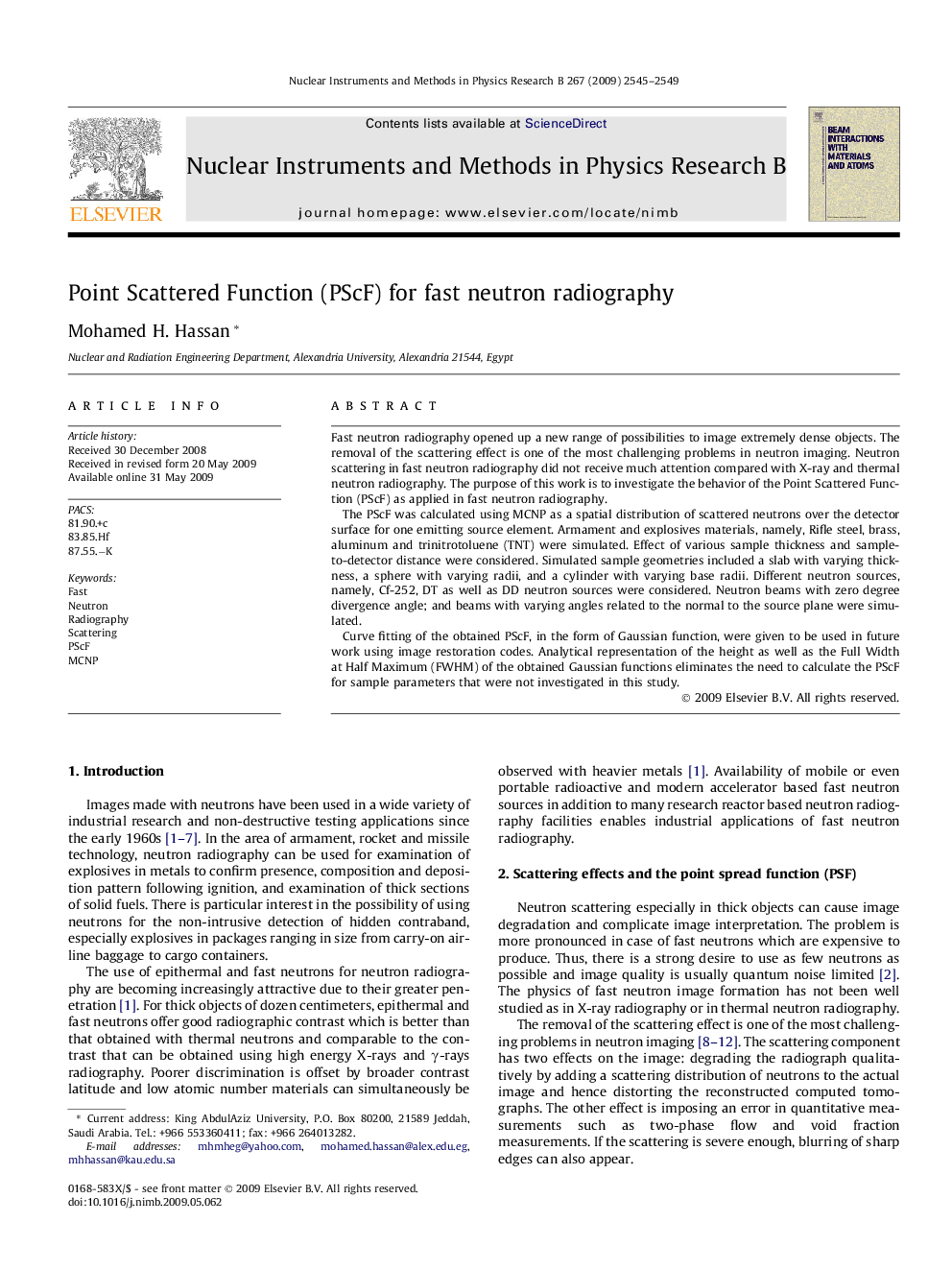| Article ID | Journal | Published Year | Pages | File Type |
|---|---|---|---|---|
| 1682344 | Nuclear Instruments and Methods in Physics Research Section B: Beam Interactions with Materials and Atoms | 2009 | 5 Pages |
Fast neutron radiography opened up a new range of possibilities to image extremely dense objects. The removal of the scattering effect is one of the most challenging problems in neutron imaging. Neutron scattering in fast neutron radiography did not receive much attention compared with X-ray and thermal neutron radiography. The purpose of this work is to investigate the behavior of the Point Scattered Function (PScF) as applied in fast neutron radiography.The PScF was calculated using MCNP as a spatial distribution of scattered neutrons over the detector surface for one emitting source element. Armament and explosives materials, namely, Rifle steel, brass, aluminum and trinitrotoluene (TNT) were simulated. Effect of various sample thickness and sample-to-detector distance were considered. Simulated sample geometries included a slab with varying thickness, a sphere with varying radii, and a cylinder with varying base radii. Different neutron sources, namely, Cf-252, DT as well as DD neutron sources were considered. Neutron beams with zero degree divergence angle; and beams with varying angles related to the normal to the source plane were simulated.Curve fitting of the obtained PScF, in the form of Gaussian function, were given to be used in future work using image restoration codes. Analytical representation of the height as well as the Full Width at Half Maximum (FWHM) of the obtained Gaussian functions eliminates the need to calculate the PScF for sample parameters that were not investigated in this study.
